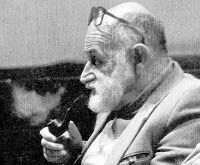Post photography

The resonance of “post-photography” with “post-modernism” can hardly be avoided. There will be an academic conference in Lucerne in November entitled “The Post-photographic Apparatus”. Assuming the term “apparatus” draws, perhaps substantially, on Flusser’s framework, it is a prominent feature of contemporary life that was introduced and spread by photography. For the fist time in history, a human being could be a seamlessly enmeshed with a device — an industrial product. I think that must already be defined as post-photographic. It is “photography,” then, that needs to be re-considered. “It” is a technology for producing images, images with a relationship to “authenticity” and to “authorship” that borrows heavily on what Flusser called traditional images, that is, drawing and painting.
To restate Antin’s quip about the relationship of modernism and post-modern in terms of photography, the medium we wanted, or perhaps still want, is one that is separate from us, so that we can hold it out away from us and mull it over. The post-photography we deserve, accordingly, is not separable. Any photograph we make or see has involved someone’s cognitive function. Even if the image is produced by algorithm, someone, somewhere wrote that algorithm. Opportunity Rover, the photographer on Mars, is as much an instance of the apparatus as any one of us.
Is it possible for us, functionaries of the apparatus in most respects, most of the time, to even think ourselves separate, to think about the “apparatus” at all? Is it possible to think back, before or beyond the apparatus, even if briefly? I’d like to suggest a kind of thought experiment. Most of us have photographs of ourselves made before we made and looked at photographs, before we read or wrote. We have some memory of a kind phylogenetic “prehistory,” extra-apparatic experience. Family photographs seem to me a particularly insidious apparatic intrusion. Ban them. Then try to remember.

